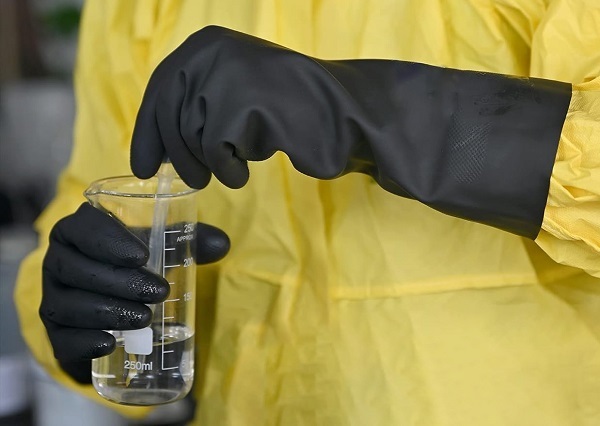News

About acid and alkali resistant gloves
In order to better ensure your own safety during labor operations. Corresponding labor protection supplies need to be used according to actual needs. If you are not wearing or not wearing the corresponding labor protection supplies. Then when the unexpected happens. Workers will face harm directly.
Today, I will briefly explain to you the knowledge of acid and alkali resistant gloves.
1. Definition:
Acid and alkali resistant gloves are also called operating box gloves and incubator gloves. It is a protective equipment used when hands come into contact with acids and alkalis or need to be immersed in acids and alkalis. It is widely used in electronics, biomedicine, chemistry, printing and dyeing, electroplating and other industries. Its quality needs to comply with the standards of AQ 6102-2007 (acid (alkali) resistant gloves).
2. Technical requirements:
1)The dimensions and tolerances of the main parts of the gloves need to comply with relevant regulations.
2)The gloves are under a pressure of 10kPa (1kPa). There should be no air leakage.
3)If it is acid and alkali resistant gloves made of latex or rubber. Osmosis should not occur in 68% sulfuric acid or 40% sodium hydroxide solution. If it is plastic acid and alkali resistant gloves. Osmosis should not occur in 40% sulfuric acid or 35% sodium hydroxide solutions.
4)The physics of acid and alkali resistant mobile phones need to comply with relevant regulations.
3. Classification:
There are about four types of gloves with acid and alkali resistance on the market.
1)Rubber acid and alkali resistant gloves. There are two types on the market: split-finger type and continuous-finger type.
2)Latex industrial gloves. It is suitable for use when in contact with low-concentration acid and alkali solutions, general chemicals, printing and dyeing solutions, toxic chemical raw materials, pollutants and general industrial operations. It can effectively prevent occupational skin diseases.
3)Plastic gloves are made into pulp by raw materials such as polyvinyl chloride resin and plasticizer (such as dibutyl phthalate, dioctyl phthalate). It is made by dipping a hand-shaped mold into pulp and baking it. The texture is soft. It has the advantages of acid and alkali resistance, cold resistance and anti-aging.
4)Plastic dipped acid and alkali resistant gloves are lined with knitted cotton cloth. PVC plastic outer layer is a pair of gloves resistant to weak acid and alkali.
4. Precautions for use:
1)When rubber acid and alkali resistant gloves (can be exposed to acid and alkali solutions below 40%) are exposed to acid and alkali solutions with a concentration of more than 40% in a short period of time. It should be rinsed with clean water in time. So as not to shorten the service life of the gloves.
2)Contact with strong oxidizing acids such as nitric acid, chromic acid, etc. will cause the product to become brittle, discolored, and early damaged due to strong oxidation. High concentrations of strong oxidizing acids can even cause burning damage.
3)Latex industrial gloves are only suitable for weak acids. Sulfuric acid, hydrochloric acid and various salts with low concentration. Do not come into contact with strong oxidizing acids such as nitric acid.
4)General latex work gloves. Agricultural gloves are only suitable for contact with general contaminants. Do not use in contact with acid and alkali operations.
5)When using, avoid contact with gasoline, engine oil, lubricants, and various organic solvents; prevent sharp metal piercing and contact with high temperatures.
6)After use, acid and alkali liquids or dirt on the surface should be rinsed with clean water and dried. Do not expose or bake. If it is not used for a long time, sprinkle a small amount of talcum powder on it to avoid adhesion.
0users like this.

